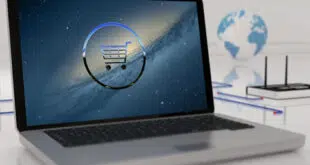Projected pilots in 2006 for contactless payment capability on mobile phones with near-field communication (NFC) technology will include high-throughput retail stores, in contrast to the self-contained environment of a sports stadium, where the first such trial began last week (Digital Transactions News, Dec. 14). Tom Zalewski, head of mobile payment and ticketing for Nokia Americas, which is supplying handsets for the current trial in Atlanta, says he can't give many details of the further tests planned for next year, but adds they will be considerably more ambitious. “It's fair to say you'll see in 2006 some trials where the phone is being used in commercial environments, in merchants that are frequented such as fast food and pharmacy,” he says. Zalewski also says Nokia will introduce another phone model for the tests, one that contains the NFC chip in the phone itself. The Nokia 3220, in use in the Atlanta pilot, has the chip embedded in its changeable cover. The new NFC phone, Zalewski says, “will be a fully integrated product.” The Atlanta pilot, which is taking place at the city's Philips Arena, allows cell-phone users to pay for concessions and merchandise by waving their phones near contactless readers at the point of sale. The phone's NFC chip establishes a radio link, allowing transmission of the consumer's credit card account data in place of a card swipe. In a process known as “service discovery,” the same chip receives instructions for player animations, games, and other digital downloads from posters deployed throughout the stadium automatically when users hold their phones within a few inches. These so-called smart posters contain NFC chips that detect the chip in the phone and trigger the download by sending instructions to the phone's browser. Zalewski says Nokia and its partners in the pilot, JPMorgan Chase & Co., Philips, VIVOtech Inc., and Visa USA, expect the contained nature of an arena to provide a thorough test of NFC-enable contactless payment via mobile phone. “Atlanta is great because it's a controlled environment,” says Zalewski. “You can get a lot of usage within a stadium.” Ultimately, he says, NFC technology combined with cellular transmission could persuade consumers to give up a familiar payment form factor, cards, in favor of another item they now carry everywhere, a cell phone. Unlike cards, key fobs, or tags, phones offer a user interface, allowing for the security of PINs. They also permit something called “wireless provisioning,” or the transmission of content such as new “cards” to account holders over the air or via near-field link-ups. Such features will be necessary, says Zalewski, to get consumers to change inbred habits. “In using a handset as a payment device, if it's as easy as cash or coins, that's not enough,” he says. “It has to be easier to get people to change their habits.” One example he cites as a possible habit-changing NFC application: downloads of electronic coupons to customers' phones from banners or signs as they are walking into a store, rather than distribution of paper coupons to them as they are checking out. This means consumers can use the discount immediately. But it also could appeal to vendors, Zalewski says. “What does it mean to manufacturers of consumer goods to reach the consumer before they make a purchase?” he asks.
Check Also
The Zelle App’s Role May Be Changing, But It Is Not Going Away, the Network Says
Zelle, the peer-to-peer payments service from Early Warning Services LLC, took steps late Thursday to …





